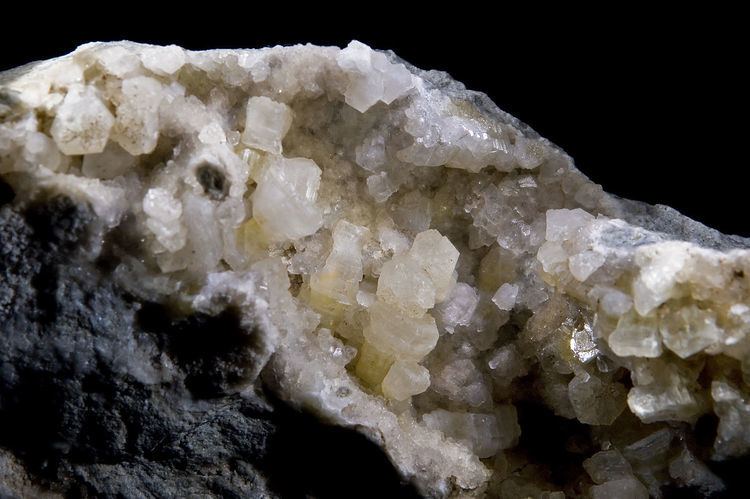Category Carbonate mineral Dana classification 15.3.4.4 | Strunz classification 5.CC.05 Crystal system Triclinic | |
 | ||
Formula(repeating unit) Na2(Sr,Ca)3Zr(CO3)6·3H2O Crystal class Pedial (1)(same H-M symbol) | ||
Weloganite is a rare carbonate mineral with formula: Na2(Sr,Ca)3Zr(CO3)6·3H2O. It was discovered by Canadian government mineralogist Ann P. Sabina in 1967 and named for Canadian geologist Sir William Edmond Logan (1798–1875). It was first discovered in Francon Quarry, Montreal, Canada and has only been reported from a few localities worldwide.
Contents
Properties
It is usually white, lemon yellow, or amber in color, and can be translucent. It crystallizes in the triclinic system and shows pseudo-hexagonal crystal forms due to twinning. The width of the crystals typically undulates down the length, forming crystals that widen in the middle or flare out at the end. Crystals are affected by light and can develop a white alteration coating over time. Weloganite is triboluminescent, producing blue light.
Occurrence
It occurs in an igneous carbonatite sill in Montreal, Canada in the Francon Quarry where it was first discovered. It also occurs in the Mont Saint-Hilaire district. Associated minerals include strontianite, dawsonite and calcite. It has also been reported from the Pilansberg Complex of the western Bushveld Igneous Complex in South Africa.
